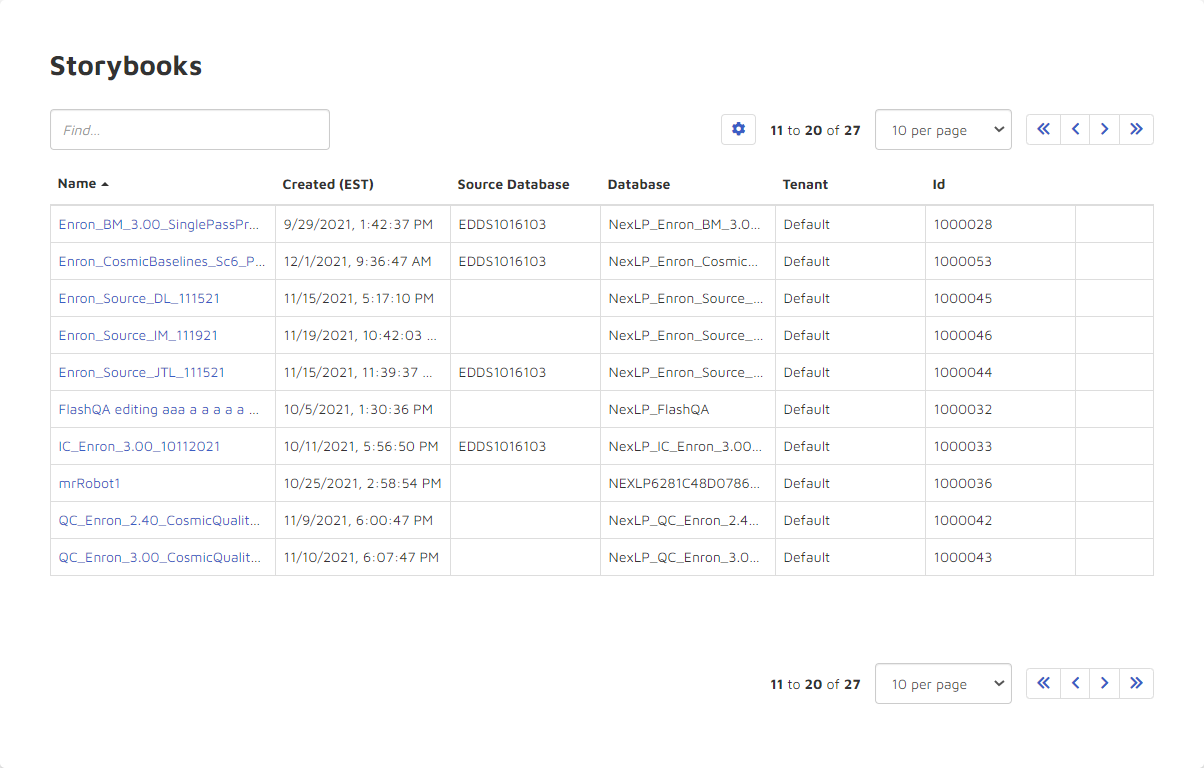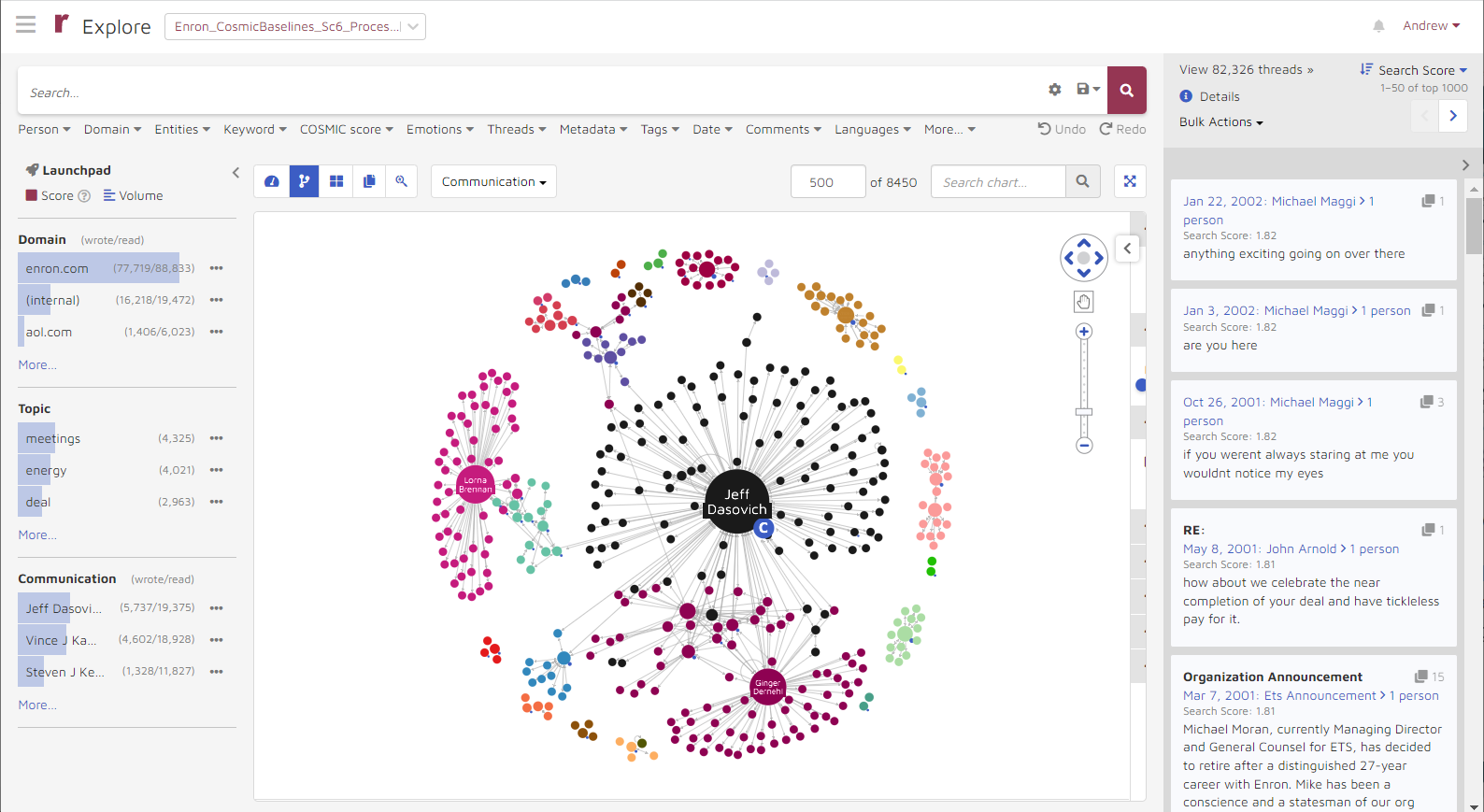Getting Started: Reviewer
Reveal AI Story Engine takes document review past keywords, culling and filtering to a refined assessment of language in a collection of document data. Using natural language processing, entity modeling, clustering and other artificial intelligence tools and techniques, Story Engine sets out a path for understanding who, what, where, when, why and even how the events under review have come together.
There is lot that happens in Story Engine and a number of terms and concepts are used to describe it, so we will start with a brief roadmap to familiarize you with the Story Engine review workflow. The Getting Started: Storybook Admin workflow document shows how a storybook is set up and configured.
Start by logging in and selecting a storybook to open by clicking the link under Name.

If you have access to only one storybook it will open immediately to the Exploring Page. Here we see the Connections visualization. The visualization graphically displays communications between people or about subjects. Clicking on a node or link expands and drilled into that portion of the view and lists the documents in it for review. There is a lot of information here that is further explained in Story Engine Exploring Page.

Your task as a reviewer is to review and classify documents pushed forward by the analytical engine to refine its probability assessments in the defined modeling categories. This process is called Training COSMIC, the cognitive machine coding system, and looks like tagging in a standard document review. Story Engine thus learns about more about the relevance of segments (individual documents or messages) and documents (inclusive threads or families of communication) in conjunction with its analysis of language, people and communications. See the User Guide section COSMIC (Cognitive Machine Coding) for details on this process.

Story Engine provides many different options to search and find relevant documents. A user can use traditional keywords, topics and people to search for documents, or AI augmented filtering methods such as COSMIC scores and Emotional Intelligence. This topic is covered in detail under Searching and Filtering Documents, but a couple of additional benefits of Story Engine analysis here are worth mentioning here:
Entities - An entity is an extracted piece of data identified by proper name by the Story Engine, from people, places or things to events, categories and formatted data such as credit card numbers. The ability to search on a particular entity or create a custom entity for a distinct matter can improve review efficiency and quality.
Merging Entities - Persons having multiple email addresses, titles, nicknames and so on have long impaired the linking of internal, external, formal and informal communications. Story Engine automatically merges entities based upon analytical interference calculations and provides users with the ability to add, remove and update entity merges. See Examine Entities for further discussion.
Inclusive Documents - When examining email threads there is always a question of whether the last segment contains all that came before; in fact, given the potential branching among forwards and replies and attachments, there may be more than one document required to fully set out the complete content of an electronic conversation. Story Engine distills threads of any length to their most complete elements for efficient review under Inclusive Documents. By default searching is set to return more precise results (fewer documents) by searching only inclusive documents. See for example Search Metadata and Appendix A for setting details.
COSMIC confidence ratings are also searchable, and the weight of each COSMIC group (tag) may be adjusted to refine the relevance of classified documents. See Search by COSMIC Score.
Story Engine analysis may be linked with document review platforms such as Reveal, or packaged and exported to expedite review and production in other platforms.
Story Engine COSMIC Groups may be packaged by the Storybook Administrator as Models and posted to a library available for further reviews so the team can hit the ground running.
There is a lot more to Story Engine that is covered in this User Guide, but now it's time get started finding the story.